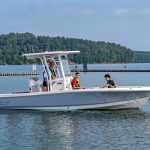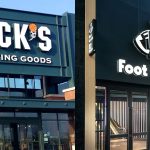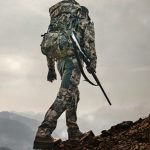When Hurricane Katrina hit the gulf coast last week it was first assumed that New Orleans had lucked out as the storm moved east and hit the Mississippi coast head on. As we all know by now, the subsequent flooding of the city of New Orleans, the effect of the storm surge on the surrounding parishes, and the virtual elimination of the gaming industry (and a lot of history) on the coast of Mississippi will obviously result in the biggest natural disaster this country has ever known. Now, one week after the storm first hit, an area roughly the size of Great Britain has seen more than a million residents displaced, many of them moving to new locations throughout the country.
The impact on the retail business is naturally the first item many in our industry think about after these storms hit. Foot Locker was predictably hardest hit, with 90 stores closed as a result. The company expects most of the stores to be re-opened during the third quarter. One AFP photo showed the Footaction store on Canal Street billowing smoke after it had already been looted. Currently, Foot Lockers corporate website, footlocker-inc.com, has a pop-up with hotlines for employees to call to get in touch with the company. The Finish Line has had seven to ten stores closed since August 25, first closed in preparation for the storm and now as a result of it.
Hibbett Sporting Goods gave no information on closings or damage estimates as they had not yet been able to get to many of the stores affected by the storm. A contact at HIBB corporate headquarters probably summed it up best, saying that it was still too early to know the extent of the damage or even the extent of store closings, but that the focus at the time was getting in touch with those stores and employees that were unaccounted for after the storm. The Sports Authority has three stores in the New Orleans area, but a store in Mississippi and another in Alabama were apparently out of harms way. Academy Sports had seven stores closed, five in Louisiana, and one each in Mississippi and Alabama. The list is now down to four closed in the southern Louisiana area and one in Gulfport, Miss. Prominent on the companys website is an assistance hotline for any displaced associates.
Ironically, Academy has a link on its website for a hurricane checklist, reminding people that hurricane season is upon us and runs through November. That list may well be the start of something broader that could be a concerted effort by the sporting goods industry to ensure that people are better prepared for not only natural disasters, but also for the next terrorist attack that the federal government seems to feel is a “when, not if” scenario. The slow government response to this latest event has many questioning their own preparedness. What if something happened here?
Based on the drama that played out on television screens across the country for the last week, it is apparent that the federal government and many local and state governments are ill-prepared for another major disaster or another attack on this country. Many citizens that watched the streets of New Orleans become the sanctuary of armed gangs and looters may be looking for ways to protect themselves and prepare their families for self-preservation. We heard comments last week from people that otherwise are proponents of gun control actually pondering the possibility of taking a class in how to handle a gun. They are most assuredly looking at creating their own survival kits in case of any future issues. Our industry should take the lead here.
After 9/11, many people stocked up on items that would serve them well in a chemical or biological attack. A dirty bomb in a mid-size U.S. city would displace as many, if not more, people than this latest disaster. Perhaps this is an opportunity for the industry to work closely with the U.S. government to develop a preparedness program and survival kits that could be accessed at sporting goods stores across the country. Many companies are already helping the victims, but preparation before another event could well prevent another real human disaster.
The U.S. armed forces turn to this industry for innovation on the battlefield; the country may need us to be even more innovative now. Perhaps the old tagline, “a chicken in every pot,” should now be, “a cook stove and fuel in every garage.”















